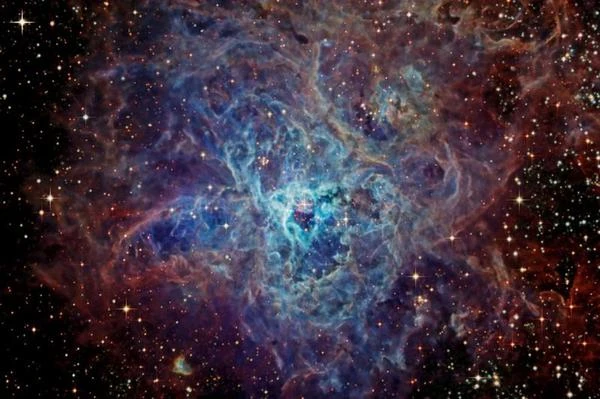
The Tarantula Nebula (30 Doradus or NGC 2070) is a giant HII region located in the Large Magellanic Cloud, a satellite galaxy of the Milky Way. Discovered by Nicolas-Louis de Lacaille in 1751, it owes its name to its gaseous filaments that resemble the hairy legs of a spider.
With a diameter of about 1000 light-years, it is the largest and brightest star-forming region in the Local Group. Its apparent magnitude of 8 makes it visible with binoculars from the southern hemisphere.
The nebula has a complex structure:
Its total mass is estimated at about $5 \times 10^5$ solar masses, mainly in the form of hydrogen and helium, with traces of heavier elements.
The Tarantula Nebula is a unique laboratory for studying the formation of massive stars:
Recent observations from the James Webb Space Telescope have revealed forming protostars with unprecedented detail.
The relative proximity of the Tarantula (about 160,000 light-years) makes it a privileged object for:
The data collected help astronomers better understand the "star factories" of distant galaxies.
Visible from the southern hemisphere between the constellations of Dorado and Mensa, the nebula is a prized object for amateur astronomers. Professionally, it has been studied by:
Future missions like the Nancy Grace Roman Space Telescope promise new discoveries about this fascinating object.